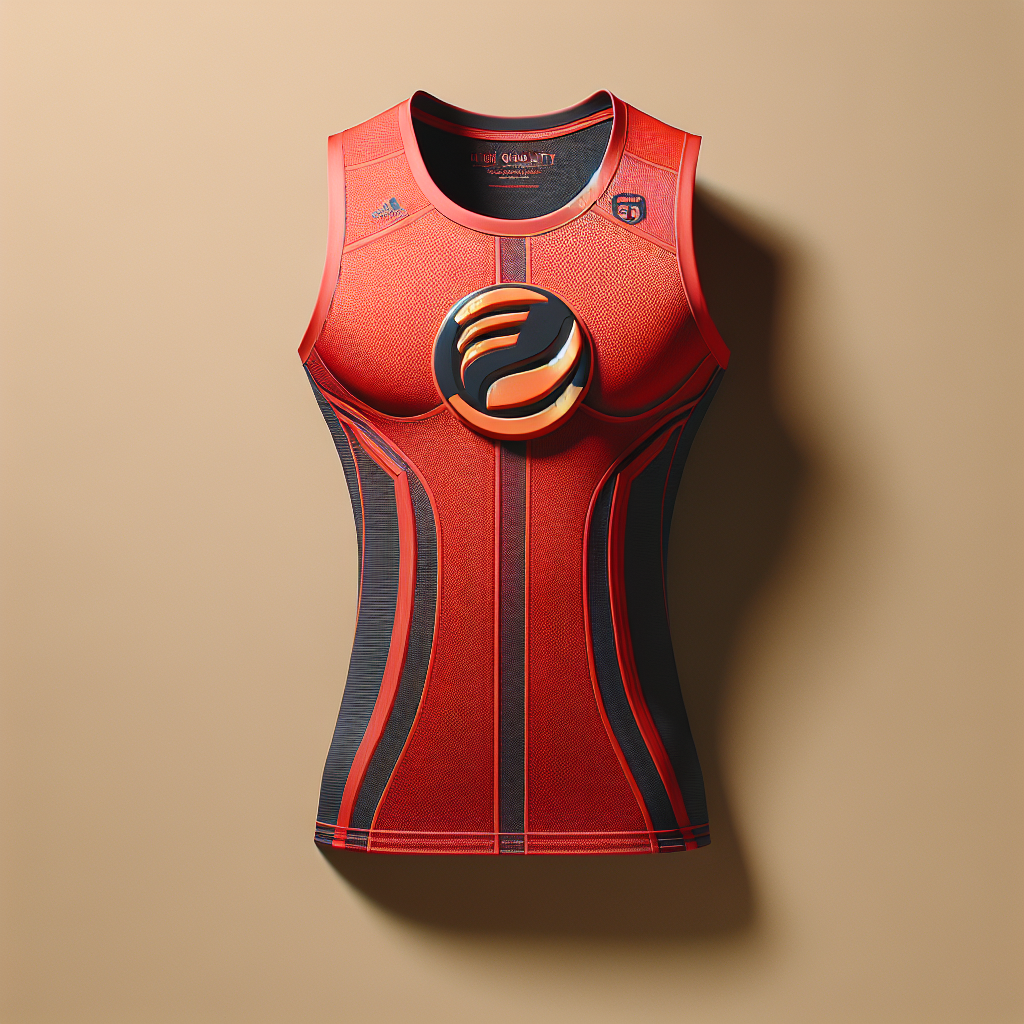In the world of sports, apparel plays a crucial role not only in performance but also in the identity and branding of athletes and teams. Among the various components of sportswear, the "sport top" has evolved significantly over the years. This article delves into the history, technological advancements, and cultural significance of sport tops, providing a comprehensive overview of their impact on modern athletics.
The Historical Journey of Sport Tops
The journey of sport tops can be traced back to ancient civilizations where athletes competed in minimal clothing. However, the concept of specialized sportswear began to take shape in the late 19th and early 20th centuries.
Early Beginnings
In the early days, sport tops were primarily made from natural fibers like cotton and wool. These materials, while comfortable, were not ideal for athletic performance due to their weight and lack of moisture-wicking properties. As sports became more organized, the need for specialized attire became apparent.
The Rise of Synthetic Fabrics
The mid-20th century saw the introduction of synthetic fabrics such as nylon and polyester. These materials revolutionized sportswear by offering lightweight, durable, and moisture-resistant options. The development of these fabrics marked a turning point in the design and functionality of sport tops.
Technological Advancements in Sport Tops
Today, sport tops are at the forefront of technological innovation, incorporating advanced materials and design features to enhance athletic performance.
Moisture-Wicking Technology
One of the most significant advancements in sport tops is moisture-wicking technology. This feature helps to draw sweat away from the body, keeping athletes dry and comfortable during intense physical activity. Brands like Nike and Under Armour have pioneered this technology, making it a standard in modern sportswear.
Compression and Support
Compression tops have gained popularity for their ability to improve blood circulation and reduce muscle fatigue. These tops provide support to key muscle groups, enhancing performance and reducing the risk of injury. Studies have shown that athletes wearing compression tops experience less muscle soreness and quicker recovery times.
Temperature Regulation
Advanced sport tops now incorporate temperature regulation features, allowing athletes to maintain optimal body temperature in various weather conditions. This is achieved through the use of breathable fabrics and strategic ventilation zones.
Cultural and Social Impact of Sport Tops
Beyond performance, sport tops have become a cultural phenomenon, influencing fashion trends and social movements.
Brand Identity and Sponsorship
Sport tops are a key element in brand identity and sponsorship deals. Teams and athletes often have exclusive contracts with sportswear brands, showcasing their logos prominently on their tops. This not only provides financial support but also enhances the visibility and marketability of both the athlete and the brand.
Gender and Inclusivity
The design of sport tops has evolved to accommodate diverse body types and promote inclusivity. Women's sport tops, for example, now offer a range of styles and support levels to cater to different needs. Additionally, unisex designs are becoming more common, reflecting a shift towards gender-neutral sportswear.
Fashion and Lifestyle
Sport tops have transcended the boundaries of athletic wear, becoming a staple in casual and streetwear fashion. The athleisure trend has seen sport tops paired with everyday clothing, blurring the lines between sportswear and fashion. Celebrities and influencers often sport these tops, further cementing their status as a fashion statement.
Case Studies: Iconic Sport Tops in History
Several sport tops have left a lasting impact on the world of sports and beyond. Here are a few notable examples:
- Michael Jordan's Chicago Bulls Jersey: The iconic red and black jersey worn by Michael Jordan during his time with the Chicago Bulls is one of the most recognizable sport tops in history. It symbolizes excellence and has become a collector's item for basketball fans worldwide.
- Brazil's National Football Team Jersey: Known for its vibrant yellow color, Brazil's football jersey is synonymous with the country's rich football heritage. It represents passion, skill, and a unique style of play that has captivated fans for generations.
- Serena Williams' Catsuit: In 2018, Serena Williams made headlines by wearing a black catsuit at the French Open. This bold fashion statement challenged traditional norms and sparked discussions about gender and race in sports.
Statistics: The Market for Sport Tops
The global sportswear market has seen significant growth, with sport tops playing a major role in this expansion. According to a report by Statista, the global sports apparel market was valued at approximately $181 billion in 2020 and is projected to reach $208 billion by 2025. This growth is driven by increasing health consciousness, the rise of athleisure, and technological advancements in sportswear.
Conclusion: The Future of Sport Tops
As we look to the future, sport tops will continue to evolve, driven by technological innovations and changing cultural dynamics. The integration of smart fabrics and wearable technology is on the horizon, promising to further enhance performance and provide real-time data to athletes. Additionally, sustainability will play a crucial role, with brands focusing on eco-friendly materials and production processes.
In summary, sport tops are more than just a piece of clothing; they are a symbol of athleticism, identity, and innovation. From their humble beginnings to their current status as a cultural icon, sport tops have made a significant impact on the world of sports and fashion. As technology and society continue to evolve, so too will the sport top, adapting to meet the needs of athletes and consumers alike.





